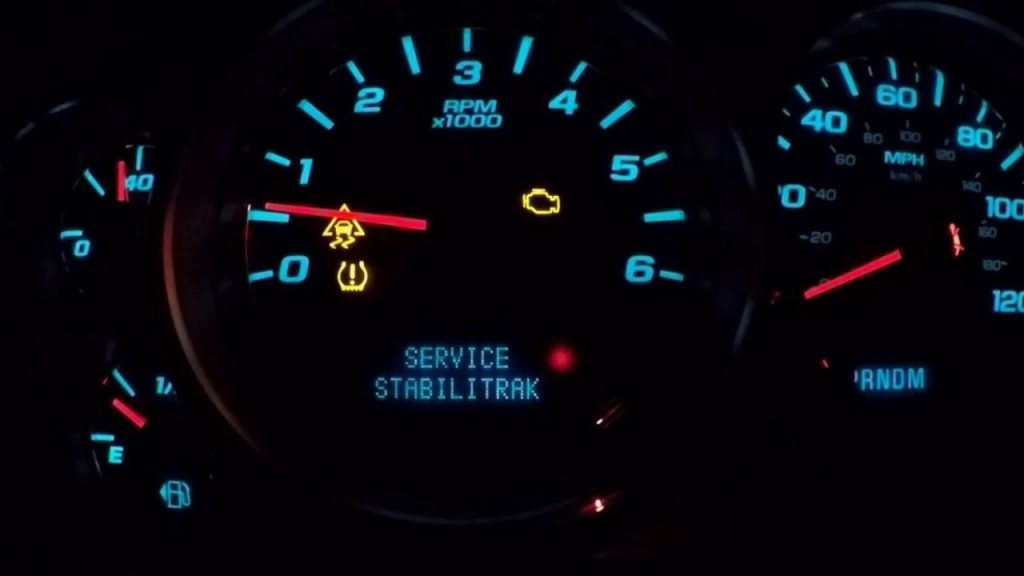
Introduction
The advancement of vehicle safety technology has been instrumental in reducing traffic incidents and enhancing overall road safety. One of the most pivotal developments in electronic vehicle stability control is StabiliTrak, General Motors’ proprietary Electronic Stability Control (ESC) system. This system is designed to mitigate loss of traction, optimize vehicle handling, and enhance driver control in adverse driving conditions. Understanding the technical operation, advantages, limitations, and maintenance of StabiliTrak is crucial for professionals in automotive engineering, vehicle safety analysis, and mechanical diagnostics.
StabiliTrak: Definition and Core Functionality
StabiliTrak is an advanced yaw control system that integrates brake-based intervention and torque modulation to maintain vehicle stability. Unlike conventional traction control systems (TCS), which primarily limit wheel slip during acceleration, StabiliTrak continuously assesses vehicle dynamics and intervenes when it detects deviations from the driver’s intended path.
The system is particularly beneficial in scenarios such as:
- Adverse weather conditions (rain, snow, ice, or loose gravel)
- High-speed cornering where oversteer or understeer may occur
- Sudden evasive maneuvers to avoid obstacles
- Unbalanced road surfaces that may induce asymmetric wheel traction
By dynamically controlling wheel braking and engine output, StabiliTrak mitigates potential loss of control, providing enhanced vehicle safety and improved handling characteristics.
Technical Mechanism of StabiliTrak
StabiliTrak functions through an intricate network of sensors and real-time data processing algorithms. The core components include:
- Yaw Rate Sensor: Measures the vehicle’s rotational velocity around its vertical axis, detecting deviations from the intended trajectory.
- Steering Angle Sensor: Assesses the driver’s input relative to the actual movement of the vehicle to detect discrepancies in directional control.
- Wheel Speed Sensors: Continuously monitor individual wheel speeds to identify inconsistencies indicative of traction loss.
- Accelerometers: Provide supplementary data on lateral and longitudinal acceleration forces affecting vehicle stability.
- Electronic Control Module (ECM): The computational hub that synthesizes sensor data and executes corrective interventions in milliseconds.
- Brake Actuators & Engine Control System: These components work in tandem to selectively apply braking force to individual wheels and adjust engine power output accordingly.
Intervention Strategies
Upon detecting instability, StabiliTrak executes corrective actions through the following methodologies:
- Selective Wheel Braking: Modulates braking pressure on specific wheels to counteract excessive yaw rate deviations.
- Torque Reduction: Dynamically adjusts throttle input to prevent traction loss under acceleration.
- Torque Vectoring (in some models): Adjusts the power distribution between left and right wheels to optimize cornering stability.
Advantages of StabiliTrak Implementation
- Enhanced Vehicle Control: By mitigating both understeer (front-wheel drift) and oversteer (rear-wheel drift), the system maintains optimal handling.
- Accident Prevention: Reduces the risk of rollovers, spinouts, and collisions caused by loss of traction.
- Adaptive Road Response: Adjusts stability control parameters based on environmental and driving conditions.
- Seamless Integration: Functions in conjunction with anti-lock braking systems (ABS) and traction control systems (TCS) for comprehensive vehicle stability.
- Support for Towing Applications: Assists in stabilizing loads and mitigating trailer sway during towing operations.
Diagnostic Challenges and Common Malfunctions
Despite its sophisticated functionality, StabiliTrak is susceptible to mechanical and electronic malfunctions, including:
- Faulty Wheel Speed Sensors: Sensor inaccuracies may cause erroneous stability control interventions.
- Yaw Sensor Degradation: A failing yaw sensor can lead to false activation of stability correction.
- Brake System Wear: Diminished braking efficiency can compromise StabiliTrak’s ability to modulate wheel control effectively.
- Electronic Communication Errors: Faults in the vehicle’s Controller Area Network (CAN Bus) may disrupt stability control operations.
- Software Anomalies: Some cases require ECM firmware updates to rectify control logic inconsistencies.
Troubleshooting and System Calibration
If a StabiliTrak warning indicator appears on the dashboard, the following diagnostic procedures should be performed:
- ECU Reset: Temporarily disengage the system by restarting the vehicle, as transient errors may self-clear.
- OBD-II Diagnostic Scanning: Retrieve Diagnostic Trouble Codes (DTCs) to pinpoint malfunction sources.
- Sensor Inspection: Evaluate the functionality of yaw rate, wheel speed, and steering angle sensors for signal inconsistencies.
- Brake System Analysis: Examine brake pad wear, hydraulic pressure, and actuator responsiveness.
- Battery and Voltage Check: Low voltage or inconsistent electrical supply can affect sensor operation and module performance.
- Professional Calibration: Recalibrate the system using GM’s proprietary diagnostic software if needed.
Disabling StabiliTrak: Situational Considerations
While StabiliTrak is beneficial in most driving conditions, there are scenarios where temporary deactivation may be warranted:
- Off-Roading Applications: Controlled wheel slip may be necessary for navigating loose terrain (e.g., mud, sand, snow).
- Performance Driving: Some driving conditions, such as track racing or controlled drifting, may require unrestricted throttle input.
- Emergency Conditions: If a sensor fault leads to erratic system behavior, temporary deactivation may improve drivability.
To disable StabiliTrak:
- Locate the StabiliTrak control button (varies by vehicle model).
- Press and hold the button for several seconds until the dashboard displays “StabiliTrak Off”.
- To reactivate, press the button again or restart the vehicle.
It is imperative to re-enable StabiliTrak once conditions normalize to maintain safety.
Long-Term Maintenance and Best Practices
To ensure the optimal performance of StabiliTrak:
- Routine Sensor Cleaning: Debris accumulation can impair sensor accuracy, particularly on wheel speed sensors.
- Brake System Maintenance: Periodically inspect pads, rotors, and hydraulic components.
- Tire Condition Monitoring: Uneven tire wear may cause traction discrepancies that affect system effectiveness.
- Firmware Updates: Ensure the ECM is running the latest software version to maintain up-to-date stability algorithms.
Conclusion
StabiliTrak represents a significant advancement in electronic stability control technology, enhancing vehicle handling, safety, and driver confidence. Its ability to dynamically adjust braking force and throttle modulation in real-time makes it an indispensable feature in modern vehicles. However, understanding its diagnostic complexities and maintenance requirements is critical for automotive engineers, technicians, and safety analysts. Ensuring proper system functionality through routine maintenance and timely repairs can prevent critical stability failures, ultimately contributing to road safety and improved driving performance.


